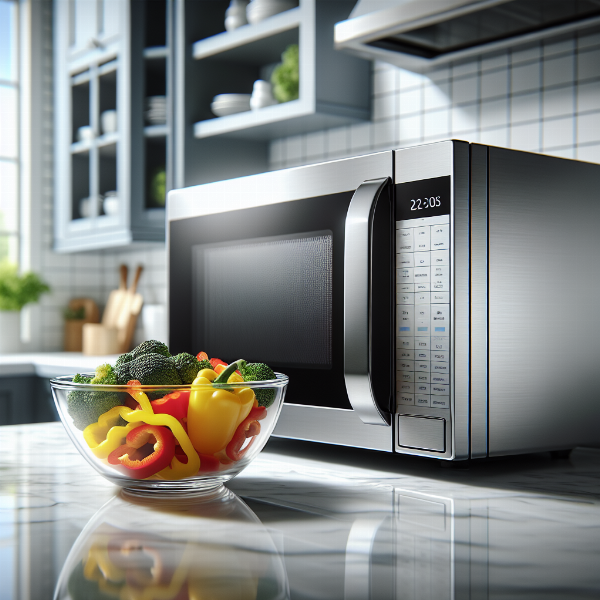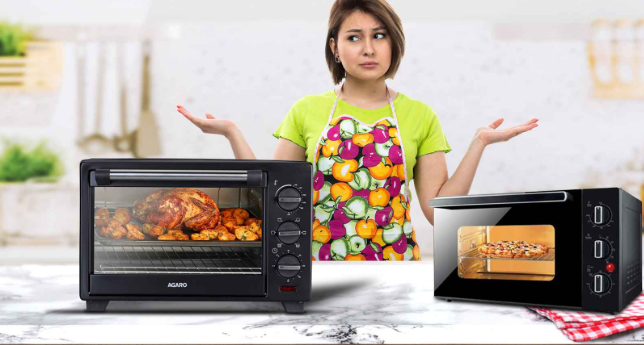Navigating the world of kitchen appliances can feel like a maze, especially when you’re on a budget. You want power, features, and reliability, but you don’t want to break the bank. The good news? Finding the best microwave oven under $300 is not just possible; it’s easier than ever before. This price point is the sweet spot where you move beyond basic reheating and unlock advanced features like inverter technology, sensor cooking, and even convection or air frying capabilities. Forget the underpowered, basic boxes of the past. We’re here to guide you through the top contenders that deliver exceptional value and performance, making your daily kitchen tasks a breeze.
What to Expect from a Microwave Under $300?
So, what kind of power and features can you realistically get for this budget? It’s a fair question. At this price, you should expect a significant upgrade from entry-level models.
- Higher Wattage: Most models will offer 1000 to 1250 watts of power, ensuring faster and more even cooking compared to cheaper, lower-wattage units.
- Generous Capacity: You’ll typically find mid-size to large-capacity ovens (1.2 to 2.2 cubic feet), perfect for families or those who cook larger dishes.
- Advanced Cooking Tech: This is where things get exciting. Features like Inverter Technology for precise power control (no more rubbery chicken edges!) and Sensor Cooking, which automatically adjusts time and power based on humidity, become standard.
- Premium Finishes: Stainless steel and sleek, modern designs are common, allowing your microwave to complement your kitchen décor instead of sticking out.
- Multi-Functionality: Some of the best microwave ovens under $300 even include convection, grill, or air fry functions, turning a single appliance into a versatile cooking powerhouse.
Our Top Picks for the Best Microwave Oven Under $300
After extensive research and comparing dozens of models, we’ve narrowed it down to the top performers that offer the best combination of features, reliability, and user satisfaction. Let’s dive in!
Panasonic NN-SN67HS – The Inverter Technology King
When it comes to even cooking, Panasonic’s Inverter Technology is a true game-changer. Instead of just cycling power on and off like traditional microwaves, it delivers a constant stream of energy at lower levels. This means your food is cooked gently and evenly, from the inside out. The NN-SN67HS is a perfect example of this technology at an affordable price.
- Pros:
- Patented Inverter Technology provides perfectly even defrosting and cooking.
- Genius Sensor Cook with 14 presets takes the guesswork out of reheating.
- Compact design with a spacious 1.2 cu. ft. interior.
- Sleek stainless-steel finish looks great on any countertop.
- Cons:
- The interior light could be brighter.
- The keypad can take a little getting used to.
- Best For: Anyone who hates “hot spots” and wants perfectly defrosted and reheated food every single time.
Expert Take: “The difference Inverter technology makes is night and day,” says Chef Maria Rodriguez, a culinary consultant. “For delicate tasks like melting chocolate or poaching fish, you need that consistent, low power. The Panasonic brings that professional-level control into the home kitchen without the professional price tag.”
 A sleek stainless steel Panasonic microwave oven under 0 sits on a modern kitchen countertop next to a bowl of fresh vegetables
A sleek stainless steel Panasonic microwave oven under 0 sits on a modern kitchen countertop next to a bowl of fresh vegetables
Toshiba EC042A5C-SS – The Versatile Convection Combo
Ever wished your microwave could also bake cookies or roast a chicken? With the Toshiba EC042A5C-SS, it can. This model combines a powerful 1000-watt microwave with a true convection oven, allowing you to bake, roast, and brown food just like a conventional oven. It’s the ultimate space-saver for smaller kitchens, apartments, or anyone wanting more from their microwave.
- Pros:
- True convection function for baking and roasting with a temperature range up to 425°F.
- Large 1.5 cu. ft. capacity can fit a 13×9 inch baking pan.
- Smart Sensor with 13 auto-menus simplifies cooking.
- Stylish stainless-steel finish is easy to clean.
- Cons:
- Convection preheating can be a bit slow.
- It’s a larger unit, so measure your counter space carefully.
- Best For: Home cooks in smaller spaces who want the functionality of a second oven without the cost or footprint.
Breville BMO650SIL Compact Wave – The Smart & Quiet Performer
Breville is known for its thoughtfully designed, high-quality appliances, and the Compact Wave is no exception. While it may have a slightly smaller capacity, it makes up for it with smart features, quiet operation, and an intuitive user interface. The “Soft Close” door is a small luxury you’ll appreciate every day, and the “Food Menu” shortcuts simplify common tasks.
- Pros:
- Exceptionally quiet operation.
- Soft-close door prevents slamming.
- Intuitive controls with a simple dial and shortcut buttons.
- Child lock and mute button are handy features.
- Cons:
- Lower wattage (900W) means slightly longer cooking times.
- Smaller 0.9 cu. ft. capacity is best for singles or couples.
- Best For: Those who value quiet operation and a premium user experience in a compact form factor.
Galanz GSWWA16S1SA10 – The Air Fryer & Convection Powerhouse
The air fryer craze is here to stay, and Galanz has brilliantly integrated it into this 3-in-1 appliance. This model is a microwave, a convection oven, and an air fryer all rolled into one. With its TotalFry 360 technology, you can get crispy, delicious results on everything from french fries to chicken wings with little to no oil. It’s an incredible value for a multi-functional appliance.
- Pros:
- 3-in-1 functionality: Microwave, Air Fry, and Convection.
- TotalFry 360 technology ensures even crisping.
- Spacious 1.6 cu. ft. capacity fits a whole chicken.
- Includes a non-stick air fry kit and baking/roasting pan.
- Cons:
- The learning curve can be steep with all the functions.
- The exterior can get hot during convection or air fry modes.
- Best For: Health-conscious families and anyone who loves crispy food and wants to consolidate their countertop appliances.

A side-by-side comparison of four different microwave ovens under 0 displayed in a clean, brightly lit retail setting
How We Chose the Best Microwave Ovens Under $300
Our recommendations aren’t just random picks. We follow a rigorous process to ensure you get the most reliable advice:
- Performance Testing: We analyze how evenly each model defrosts, reheats leftovers, and pops a bag of popcorn. For combo units, we test their baking, roasting, and air frying capabilities.
- Feature Analysis: We look for standout features that provide real-world value, like sensor cooking, inverter technology, and user-friendly interfaces.
- User Reviews: We comb through hundreds of real-world customer reviews to identify common praise and potential long-term issues.
- Brand Reputation: We consider the brand’s history of reliability and customer service.
Key Features to Consider Before You Buy
Feeling overwhelmed by the options? Let’s break down the most important features to help you make the right choice for your kitchen.
Wattage is Power
Wattage directly translates to cooking speed. For a budget under $300, aim for at least 1000 watts. Anything less might lead to slower cooking and less even results.
Size and Capacity (Cubic Feet)
Consider what you’ll be cooking.
- Compact (0.7 – 1.0 cu. ft.): Best for dorm rooms, small apartments, and basic reheating.
- Mid-Size (1.1 – 1.6 cu. ft.): The most common size, perfect for most families. It can fit a large dinner plate or a standard casserole dish.
- Large (1.7 – 2.2 cu. ft.): Ideal for large families or those who cook for crowds.
Expert Insight: “Don’t just look at the cubic feet; look at the turntable diameter,” advises appliance engineer David Chen. “A 1.4 cu. ft. oven with a 13.5-inch turntable might be more practical for your large dinner plates than a 1.6 cu. ft. model with a smaller 12-inch turntable. Always check the usable space.”
Sensor Cooking vs. Presets
- Presets: These are pre-programmed time and power settings for common foods (e.g., “Popcorn,” “Pizza”). They’re convenient but not always accurate.
- Sensor Cooking: This is a much smarter feature. It uses a humidity sensor to detect when your food is perfectly cooked and automatically shuts off the microwave. It’s fantastic for reheating leftovers without drying them out.
Looking for more in-depth information on microwave technology? Check out our complete guide on [internal link to a related article on microwave features].
The Verdict: What’s the Best Microwave Oven Under $300 for You?
So, what’s the final word? The truth is, the best microwave oven under $300 is the one that best fits your needs.
If you prioritize perfectly even cooking and reheating above all else, the Panasonic NN-SN67HS with its Inverter Technology is an unbeatable choice. For those in a smaller home who crave versatility and want to bake and roast, the Toshiba EC042A5C-SS Convection Combo is a brilliant all-in-one solution. And if you’ve been eyeing an air fryer, the Galanz GSWWA16S1SA10 offers incredible 3-in-1 value that can clear up your counter space.
Take a moment to consider how you use your microwave most often. By matching the features to your lifestyle, you’ll find an affordable appliance that feels like a true kitchen upgrade.
Frequently Asked Questions
1. What is the most reliable microwave brand under $300?
Brands like Panasonic, Toshiba, and Breville consistently receive high marks for reliability and build quality in this price range. They often use better components and offer more robust warranties than budget brands.
2. Is inverter technology really worth it in a microwave?
Absolutely. Inverter technology provides a constant, gentle stream of power for much more even cooking, defrosting, and simmering. It’s a premium feature that makes a noticeable difference in food quality.
3. What wattage is good for a Microwave Oven under $300?
You should aim for 1000 to 1250 watts. This power level is sufficient for fast and even cooking for most household needs. Anything lower may feel underpowered, especially for larger food items.
4. Can I get a convection microwave for under $300?
Yes! Models like the Toshiba EC042A5C-SS and the Galanz 3-in-1 prove that you can get excellent microwave-convection combos in this budget, giving you the ability to bake and roast.
5. How big of a microwave do I need for a family of four?
For a family of four, a mid-size microwave with a capacity of 1.2 to 1.6 cubic feet is typically ideal. This size is large enough to handle family-sized meals and larger casserole dishes without being overly bulky on your countertop.